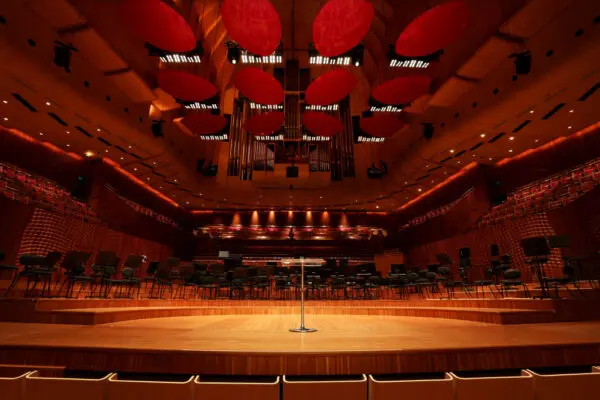One of the great problems that we have here in Australia is that within our arts institutions, artistic decisions are increasingly being made not by artists but by administrators.
Take, for example, the symphony orchestra. Where a conductor once largely curated his own artistic affairs, an “artistic planning team” of three to four bureaucrats, sometimes more, now exists. Their responsibilities are enigmatic to even one who works in the industry.
A group of professional musicians can easily programme a season’s worth of symphony orchestra concerts in a couple of hours; I used to simulate such with friends during my undergraduate days.
Why, then, an entire department requires an annualised salary—at the taxpayer’s expense, no less—to do just this is genuinely beyond me.
Conductor Sir Simon Rattle and the London Symphony Orchestra recently toured Australia to critical acclaim—though, for me, the Brisbane performances have not proved to be as memorable as Mariss Jansons’ “Heldenleben” with the Royal Concertgebouw Orchestra nine years earlier.

So much good music—or, if you prefer, so much music—is not being performed in this country, not least of all music by Australian composers, largely because, as another friend put it, “tunes enduing financial return reign supreme.”
Return Art to the Artists
Historically, artistic innovation in Western Music has never been the result of fiscal preoccupation but rather bold imagination.But today, I think, we are beginning to see the opposite, a kind of corporatized repression of imagination—particularly as artistic institutions, largely due to their administrators, prioritise political and commercial agendas.
Overblown bureaucratic arrangements within an orchestra negatively affect its entire musical ecosystem, and I am sure this is true of any arts institution.
The more administrators make decisions and enforce policies, the more conductors and musicians feel limited as creatives.
Artistic hierarchies in orchestras are well established and should remain intact, but at the same time, musicians are not simply cogs within some corporative, symphonic machine. Subverting a musician’s creative agency can only lead to outcomes of decreased artistic quality.
Bureaucrats are also expensive. The more administrators a symphony orchestra employs, the less resources it has to contract additional forces, perform additional concerts, tour regionally (an important priority for any serious Australian ensemble), commission new works, and so on.

There is one state orchestra here in Australia that, according to its 2022 Annual Report, employs not just 76 full-time musicians but a whopping 78 managerial staff.
Of course, it must be noted that this orchestra in question also employs hundreds of casual musicians every year, but the question arising certainly is an interesting one: should an arts institution funded by the taxpayer effectively hire a 1:1 ratio of full-time artists to bureaucrats?
The ordinary punter very likely assumes his taxes are supporting musicians, not office clerks; after all, when he thinks of an orchestra, his immediate thought is most likely to be of music, not administration.
The danger introduced here is that the public, recognising its understanding of who receives its monies is flawed, first loses faith in the integrity of arts institutions and then in the need for art together. That cannot, under any circumstances, come to pass.
Am I advocating for the total dissolution of every administrator in every Australian orchestra? No, I would like to believe I am not that naïve. Accountants balance ledgers better than accordionists.
But could Australian orchestras endeavour to return the bulk of artistic planning to artists, as well as start by deflating their corporate bureaucracies by 10 to 20 percent? Yes—and I believe they should.
For in all of this, do not misinterpret my leanings: I would not describe myself as anti-establishment. I actually think I am quite pro-establishment.
I want our cultural establishments to be artistically strong so that they may enjoy futures of exponential success. But to stay on the present bureaucratic course is, I think, to jeopardise that ambition.





